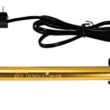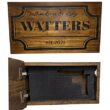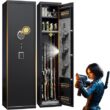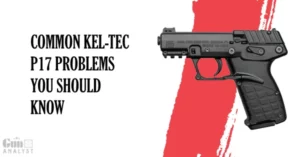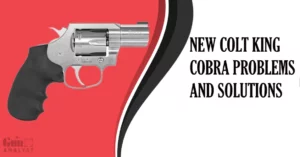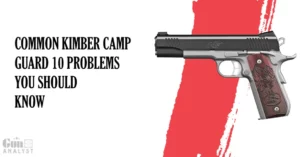The Smith and Wesson Model 351C is a Centennial Model Air Weight variant. This revolver, constructed on an aluminum-alloy J-frame and chambered in 22 Magnum, is extremely lightweight, making it ideal for concealed carry.
However, there are a few typical problems with this revolver.
Inaccurate accuracy, often light primer strike problems, sudden misfires, low-velocity issues, frequently jammed cylinders, and also small and uncomfortable manufactured grip are the most frequent Smith and Wesson 351C problems.
In this article, I will clarify some usual Smith and Wesson 351C problems. So first, let’s look at some of the features and specifications of this gun.
Features & Specifications of Smith and Wesson 351C Gun:
| Smith and Wesson 351C Specs | |
| Cartridge | 22 Magnum |
| Capacity | 7 Rounds |
| Barrel Length | 1.875 Inches |
| Weight (Unloaded) | 11.5 Ounces or 326 Grams |
| Length | 6.25 Inches |
| Width | 1.31 Inches |
| Height | 3.75 Inches |
| Safety | Hammer Block Safety |
| Sights | Front – XS Sights White Dot Rear – Fixed U-Notch |
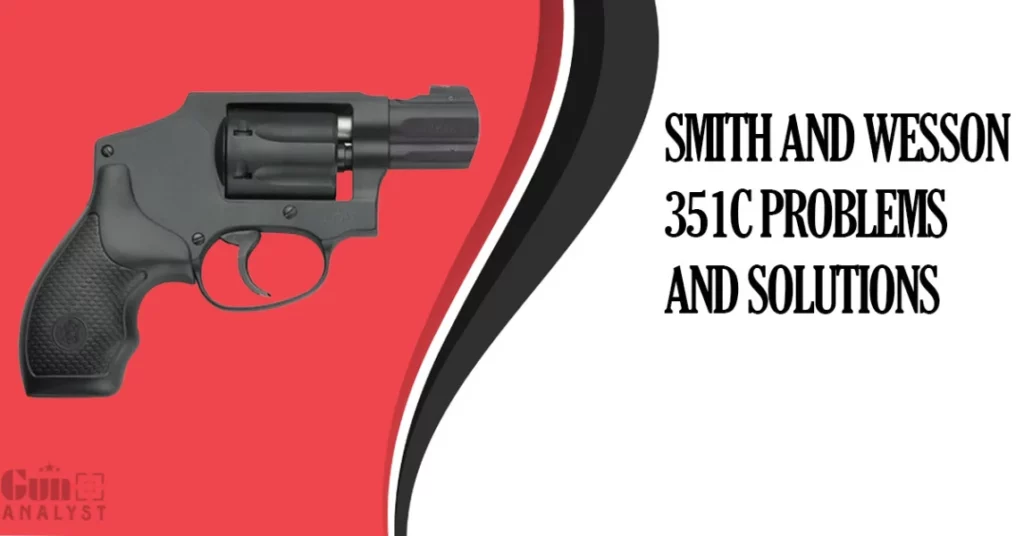
Common Smith and Wesson 351C Problems and Solutions
| Problems with Smith and Wesson 351C | Solutions |
| Inaccurate Accuracy | Practice more to get used to the heavy trigger pull. |
| Light Primer Strike Issues | Examine the firing pin area and clean it. |
| Sudden Misfires | Exchange ammo and examine the firing pin. |
| Low Velocity | Find a less heavy bullet than the current one. |
| Jammed Cylinder | Clean under the extractor. |
| Uncomfortable Small Grip | Practice more to get comfortable or replace the grip with a bigger one. |
1. Inaccurate Accuracy:
It is very hard to shoot accurately with this pistol owing to a large number of trigger pulls. And as you fire more rounds with it, the trigger pull gets stronger.
This pistol requires a lot of trigger pulls, making it challenging to shoot effectively.
Because a manufacturing flaw might be the source of the issue. If this is a manufacturing defect, the trigger pull also gets stronger as you shoot more rounds with it.
The Fix:
Send it back to the company as soon as you can if the issue is the result of a manufacturer’s defect.
Alternatively, you may fire a thousand rounds or more with the revolver to get used to the heavy trigger pull. Practice dry fire with the gun to build finger strength and feel comfortable with it.
2. Light Primer Strike Issue:
Some customers claimed that the gun occasionally had minor striking troubles. Gun buildup or mechanical failure are two possible causes.
The probable reason might be the unclean firing pin area. This issue can occasionally be caused by the gap between the bolt face and cartridge.
The Fix:
Examine the firing pin area, then thoroughly clean and lubricate the area. Don’t apply too much lubricant there because doing so makes the region unclean once again and might cause the problem to recur.
If you can’t solve the problem by yourself, you can speak to an expert or ask a local gunsmith for assistance.
3. Sudden Misfires:
A defective or damaged firing pin may be the cause of the misfire. Sometimes they accidentally give weak firing pins, which causes the problem.
The issue can occasionally also be caused by bad ammunition. If the shooter is a novice, the problem might develop into a serious mishap that does a great deal of harm.
The Fix:
If the firing pin is defective or damaged, look it over and replace it with a new one. Since firing pins are quite inexpensive, it would be best if you brought extras with you.
An alternative type of ammunition exchange could help to fix the problem.
4. Low Velocity:
The small barrel of the gun causes problems with low velocity. This is how this revolver is manufactured.
This is not the gun to choose if the user is looking for one with a high velocity.
The Fix:
There is only one way to resolve this problem if you wish to keep the revolver. Your gun needs a lighter bullet, so locate one.
A lighter bullet can go farther and quicker within the same cartridge. The lighter bullet will, however, experience more wind resistance and slow down more quickly than a heavier bullet traveling at the same speed.
5. Jammed Cylinder:
The cylinder may frequently become stuck for several reasons. The cylinder may jam if the gap adjustment is incorrect.
The gun can occasionally bind and the cylinder won’t revolve due to unburned powder or dirt under the extractor.
The Fix:
Before bringing the cylinder with you, make sure the adjustment is correct. Take assistance from the instructions if you are not an expert at this.
Use the correct brush to routinely clean the dirty area under the extractor. Don’t apply too much lubricant there.
6. Uncomfortable Small Grip:
The Smith and Wesson 351C’s grip is designed to reduce the weight of the firearm. Some users who are not habituated to using a small grip have a lot of problems doing so.
Beginners may find it difficult to adjust to a small grip since it takes practice to feel comfortable with it.
The Fix:
Get more comfortable with the revolver by doing more practice. To learn how to operate the gun, you must dry fire it at least a thousand times.
Try holding the rifle with both of your hands to see if you can find a good grip.
If you’re not used to using the smaller grip, you can adjust your grip. However, altering the grip is simple.
User Feedback on Smith and Wesson 351C
The Smith and Wesson 351C is a portable, user-friendly pistol. For its size and shooting skill, it has gotten several favorable reviews. But because of its unavoidable flaw, the revolver has also received some negative reviews.
The 351C has been thoroughly explored in this post on The High Road Forums. Some of them had a 351C that they had no problems with and talked about in their evaluations.
People have compared the Smith and Wesson 351C handgun to other pistols on the Smith and Wesson forum. Despite its numerous other shortcomings, the Smith and Wesson 351C is frequently recommended by users.
In this post from the Smith Wesson Forum, you will get to see some important aspects and a review of the gun.
Top 3 Alternative Guns of Smith and Wesson 351C
Here are some best alternatives for the Smith and Wesson 351C:
- Ruger Single Nine
– Shoots 22 WMR ammo with a capacity of 9 rounds.
– costs $869.00 and comes with Willimas adjustable fiber optic sights.
– Features a transfer bar safety mechanism. - Smith and Wesson Model 43C
– Features an aluminum cylinder and frame with a stainless steel barrel.
– Fires 22 LR ammo with a snag-free internal hammer.
– Comes with a J-frame for $749.00. - Taurus TX22
– Has 12 models with 10 or 16 rounds capacity, non-threaded barrel, and non-manual safety options.
– Shoots 22 LR rounds and features a threaded custom bull barrel with trigger safety.
Frequently Asked Questions (FAQs)
What are the Smith and Wesson 351C gun’s frame finish and material?
Aluminum alloy makes up the frame and has a matte black finish.
What are the Smith and Wesson 351C’s grip specifications?
The material of the grip is synthetic.
How much does the Smith and Wesson 351C cost?
$689.99.
How much trigger pull does the Smith and Wesson 351C have?
11lbs.
What is the build material of the Smith and Wesson 351C?
Aluminum alloy frame and cylinder, stainless steel barrel, and Snag-free internal hammer.
What is the best ammo for the Smith and Wesson 351C revolver?
The Speer Gold Dots.
What is the magazine type of the Smith and Wesson 351C?
Plain.
What is the barrel twist rate of the Smith and Wesson 351C?
1:18¾ Inches.
Conclusion
In this article, I’ve covered the Smith and Wesson 351C issues that are encountered the most, even though this revolver’s issue is very typical. Follow my recommendations exactly if you want to fast-fix your revolver.
If you own this revolver, make sure you train with it frequently and keep it maintained by cleaning it often. This pistol is a jewel from the 351 series, and if you take care of it, it will never disappoint you.



